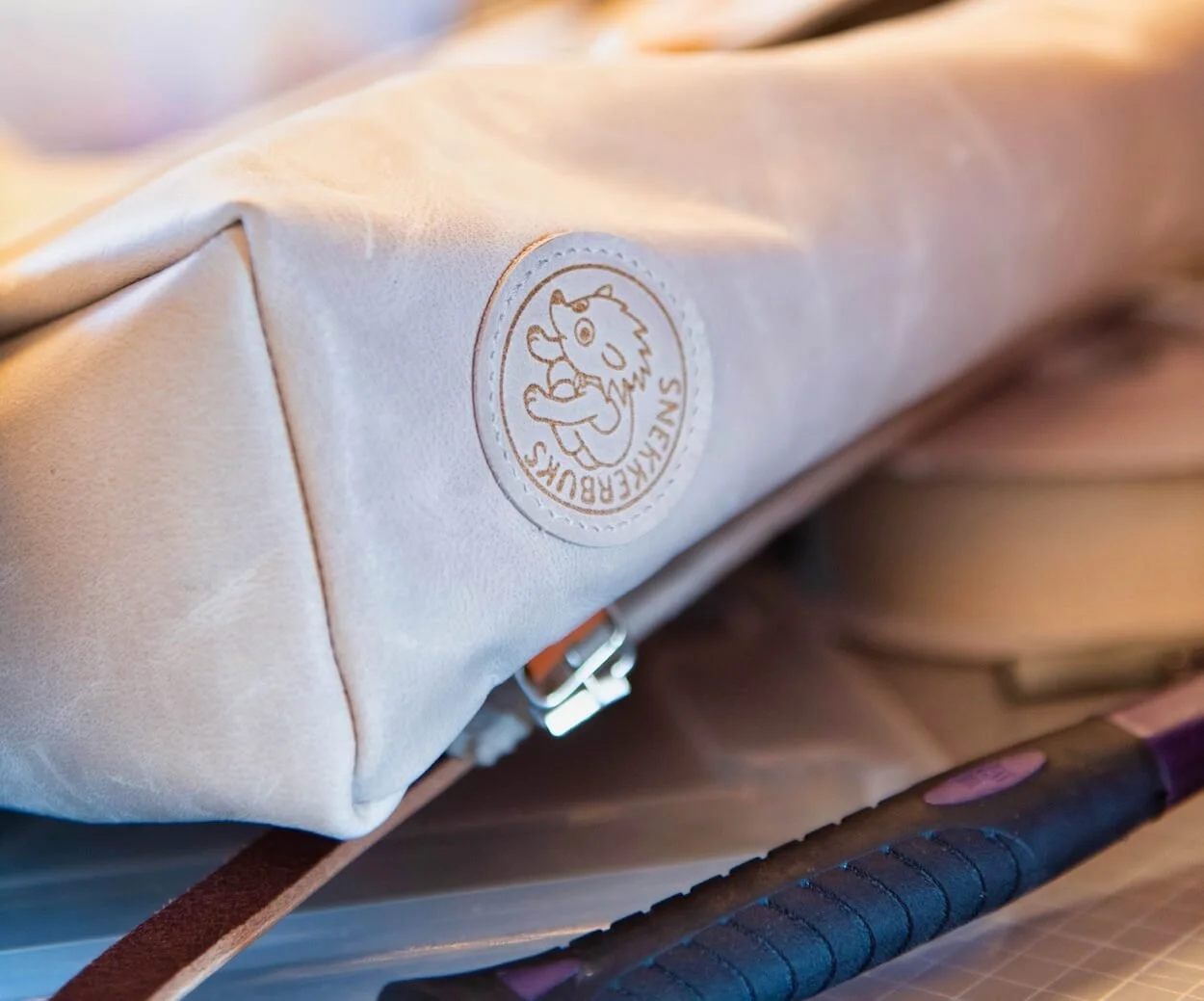Our leather: Sustainable & 100% certified!
Find out everything about our most important material at Snekkerbuks.
"Leather is a natural material that ages beautifully over the course of its long life."
- Kristin Maurer, founder of Snekkerbuks
Why is high-quality genuine leather the best material for our products?
At Snekkerbuks, our business model is based on sustainability and circular economy practices. Our goal is to offer our customers products with the smallest possible ecological footprint. How do we do that?
In this article, we address some frequently asked questions about our most important material: sustainable leather. What makes leather 'sustainable', how do we ensure quality through leather certificates, and why is sustainably produced real leather a more suitable material for our products than artificial leather or vegan leather?
Overview:
Leather is durable and timeless.
Leather is easy to recycle.
Leather is a renewable resource and 100% biodegradable.
The comparison: real leather vs. vegan leather vs. artificial leather.
Sustainable leather production and certification.
Transparency about materials and production.
1. leather is durable and timeless
Leather products are generally more durable than their synthetic and vegan alternatives. High-quality leather parts are also water and dirt repellent - they can withstand years of intensive use. This makes them the ideal material for our punching bags, children's lederhosen and rucksacks, which are designed to last a lifetime.
Leather even becomes more beautiful over time: it acquires a patina, the colors become richer and deeper and the fabric softer. However, it is important to take good care of leather products, as described in our Tips for leather care is explained.
Longevity saves resources, because the longer a product lasts, the less it has to be reproduced and purchased.
At the same time, unlike other fabrics, leather is always in: leather goods have a timeless appeal and are less susceptible to short-term fashion trends compared to other fabrics. Another reason to buy fewer replacements!
2. leather can be easily repaired and recycled
If a product does break, leather can be easily repaired and endlessly recycled. Old leather bags become new ones, rucksacks become laptop bags... there are no limits to creativity and the material remains in circulation for even longer this way.
3. leather is a renewable resource and 100% biodegradable
Sustainable leather is made from animal hides that are a by-product of meat and milk production. Instead of leaving this valuable resource unused, we process high-quality German organic leather and are thus committed to the responsible use of a raw material that normally ends up as a waste product. Unfortunately, half of all animal skins worldwide are incinerated due to a lack of demand.
In contrast, plant-based leather alternatives such as pineapple leather (Piñatex), apple leather, mushroom leather (Mylo) or cactus leather (Desserto) offer an animal-free option. However, most of these materials contain synthetic components such as polyurethane (PU) to ensure durability. PU is a petroleum product and therefore non-renewable.
When a leather product is finally disposed of, it is completely biodegradable, unlike synthetic materials. As an organic product, it simply decomposes over time and does not contribute to the problem of microplastic pollution.
4. real leather vs. artificial leather vs. vegan leather alternatives
Many people are now opting for vegan or artificial leather products, as these appear to be the more sustainable option at first glance. As already mentioned, this is not necessarily the case: "classic" artificial leather is made from PVC films, i.e. it is made of plastic.
Vegan leather alternatives are artificial leather materials, some of which are made from bio-based raw materials such as mushrooms, leaves, pineapple or cactus. However, only in part: a large proportion are still synthetic binders, which are non-renewable and biodegradable. In addition, the innovation around vegan leather alternatives is still in a testing and experimental phase. This means that most of these alternatives do not reliably possess all the properties that make leather such an ideal material for our products: durable, robust, water-repellent and recyclable.
We are therefore convinced that high-quality, sustainably and fairly produced genuine leather is and remains the perfect material for our products.
5. sustainable leather production and certification
Sustainable leather production, without toxic chemicals and exploitative production chains, is extremely important to us. We only use high-quality, robust cowhide from responsible, certified production. We source our leather from German dealers who work exclusively with tanneries that are certified according to the Gold Standard of the Leather Working Group (LWG) - the world's leading sustainability standard for leather production.
In addition, our leathers comply with the European REACH regulations (Registration, Evaluation, Authorization and Restriction of Chemicals), which exclude the use of toxic chemicals in the tanning process. This enables us to ensure that the regulations for the protection of the environment and human health in the production chain are complied with. Our own leathers are partly vegetable-derived and partly mineral-derived.
6. transparency about materials and production
Caution: Ninety percent of the leather produced worldwide does not come from sustainable production. Even leather products with the "genuine leather" certificate are in most cases produced under miserable working and environmental conditions such as child labor and the use of harmful and often toxic substances in Bangladesh, India or China.
Therefore, always pay attention to transparency when buying leather: where does the leather itself (the raw material) come from, where and how was it tanned? This information is often not obvious to consumers, especially if the product was not produced in a responsible manner. In the case of sustainable leather products, the origin is usually explained in detail on the label .
You will also find information about all the different materials on our products, so that full transparency is guaranteed. This applies not only to the leather used, but also to the manufacture of our products: Fair-made in Amsterdam, in our own atelier.

